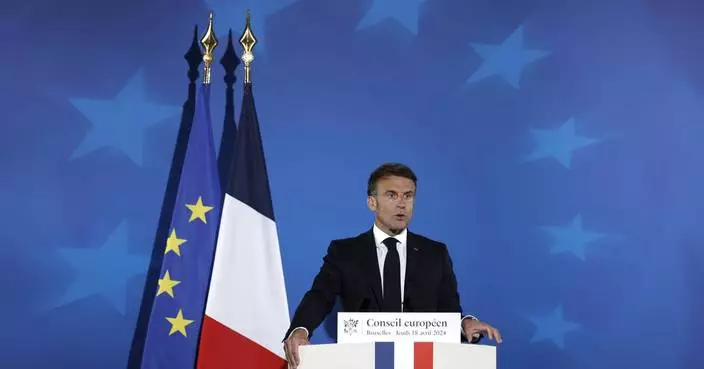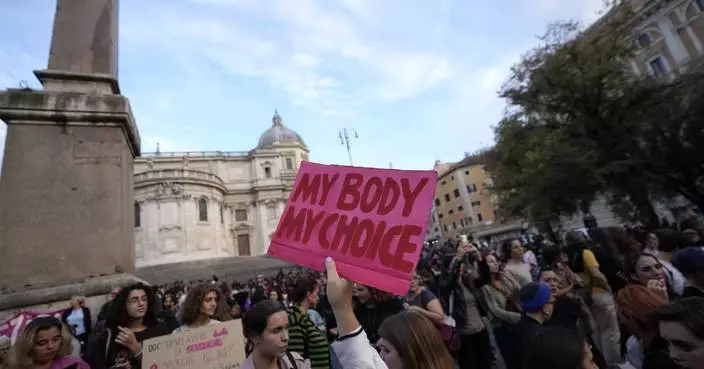A complex of ancient temples in Rome that are linked to the scene of Julius Caesar's murder will be opened to the public.
The below-street-level temple ruins at Largo Argentina in downtown Rome is visible to pedestrians peering from above but closed to visitors. For decades, access was enjoyed only by a colony of cats, the cadre of volunteers fed them and, occasionally, archaeologists.
But Rome Mayor Virginia Raggi announced Monday that by late 2021, walkways will be built inside the site so tourists can stroll through the ruins. Luxury Bulgari jewelry-maker, which also funded the restoration of Rome's Spanish Steps, is sponsoring the work.

A view of the archeological site of Largo Argentina, in Rome, Monday, Feb. 18, 2019. A complex of ancient temples linked to Julius Caesar’s murder will be opened to the public. The below-street-level temple ruins at Largo Argentina in the heart of downtown Rome is visible to pedestrians. But Rome’s mayor said Monday by late 2021, walkways will be constructed inside the site so that tourists can stroll through the ruins. Bulgari luxury goods maker is sponsoring the work. The area includes a stone podium that was part of the senate-meeting place where Caesar was slain in 44 B.C. (AP PhotoGregorio Borgia)
The ruins include a stone pedestal from the Curia of Pompey, the meeting place of senators, where Caesar was slain in 44 B.C.
JOHANNESBURG (AP) — A selection of South African artworks produced during the country’s apartheid era which ended up in foreign art collections is on display in Johannesburg to mark 30 years since the country's transition to democracy in 1994.
Most of the artworks were taken out of the country by foreign tourists and diplomats who had viewed them at the Australian Embassy in the capital, Pretoria. The embassy had opened its doors to Black artists from the townships to be recognized and have their artworks on full display to the public.
The artworks, which reflect the daily struggles of the country’s Black majority during the apartheid era and the effects of racial segregation policies, are on display alongside works by some of South Africa’s exciting contemporary artists.
The exhibition creates a blend of perspectives on South Africa through the eyes of artists who lived during and after the country's most difficult period.
It is a culmination of efforts to repatriate African artworks, artifacts and valuable cultural items to Africa by organizations such as the Ifa Lethu Foundation, which is hosting the exhibition.
The organization has repatriated more than 700 pieces, including works by South African artist Gerard Sekoto, who died in Paris in 1993.
Similar efforts have been made across Africa, including in Benin and Nigeria.
Some of the highlights of the exhibit are an undated piece titled “For the Children” by renowned South African artist and sculptor Dumile Feni, who died in New York in 1991 before he could return to South Africa to witness the end of apartheid.
A 1987 piece titled “Mineworkers” by South African artist Mike Khali which addresses the plight of migrant workers in South African gold mines is also part of the exhibition, which is being held at the Apartheid Museum in Johannesburg.
Michael Selekane, a contemporary artist whose work is part of the exhibition, pointed out some of the technical hurdles faced by artists who came before him.
“The use of material was limited for them. That is why most of their work is black and white, and it is prints. Painting was an expensive medium to work on, their conditions were tough,” he said.
Selekane's “Rosy Future” and “Shattered” are part of the exhibition.
“We need to reflect on the fact that we did not just magically emerge as artists, there were people who laid the way forward regardless of whether their context was difficult, complicated, undoable, they were resilient in what they were doing,” said Lawrence Lemaoana, a contemporary artist whose work is also on show.
“In this period, art by black artists was not considered worth including in South African museums, galleries or corporate or private collections,” notes exhibition curator Carol Brown.
“With the exception of a few outliers — including workshops such as Polly Street in Johannesburg and the Evangelical Lutheran Centre at Rorke’s Drift, established by foreign missionaries in the former province of Natal — art education for black artists was minimal."
“For much of their lives, art materials, books and exhibitions were denied to them,” Brown writes in her curator’s statement.
The works have been grouped thematically, she says: Suffering and Conflict, Dreams of the Future, Leisure and Culture, City of Gold, Whose Land Is It? and The Beginning.
“These themes invite contemplation of the socio-political landscape of present-day South Africa, but also allow us to see how the past influences and shapes the present — and how contemporary visions can highlight the modernity in the overlooked and undervalued art produced under the terrible constraints of apartheid,” she said.
The exhibition runs until July 31.
AP Africa news: https://apnews.com/hub/africa
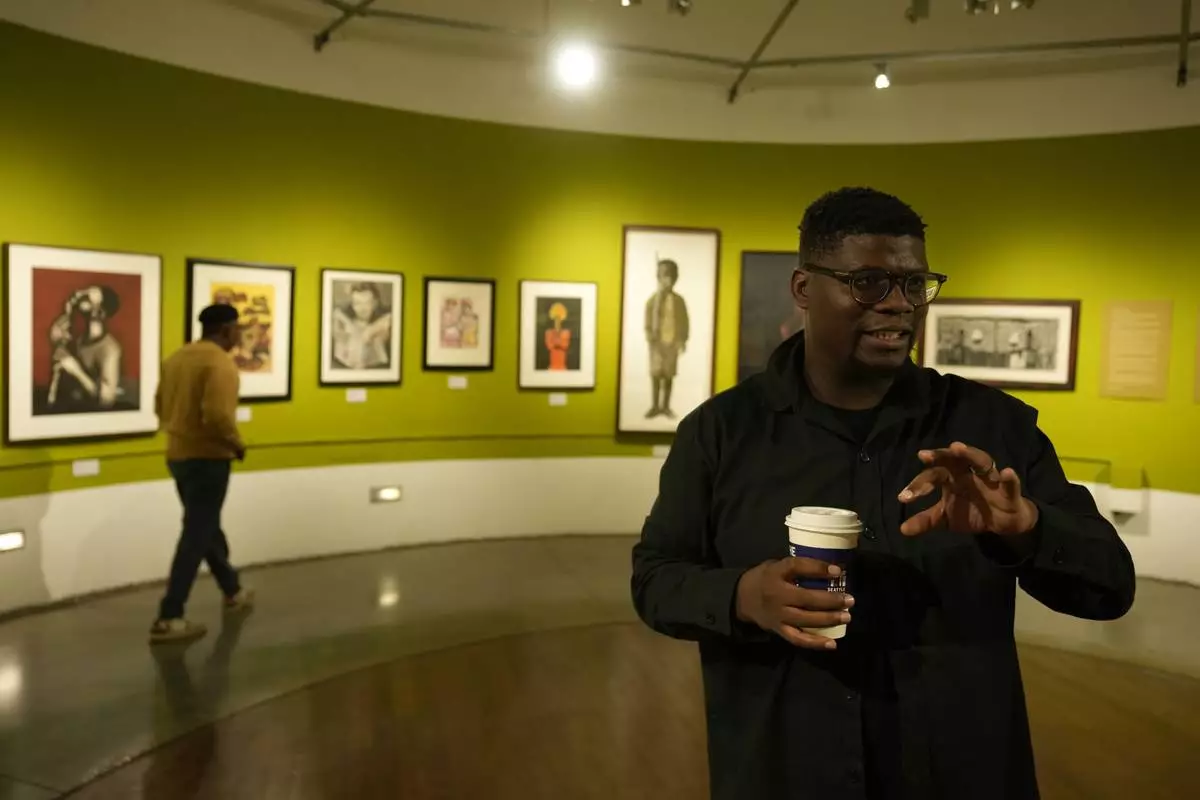
Artist Lawrence Lemaoana at an exhibition at the Apartheid Museum in Johannesburg, South Africa, Wednesday, April 24, 2024. A selection of artworks which were produced during the country's apartheid era and ended up in foreign art collections are on display to mark 30 years since the country's transition to democracy in 1994. (AP Photo/Themba Hadebe)
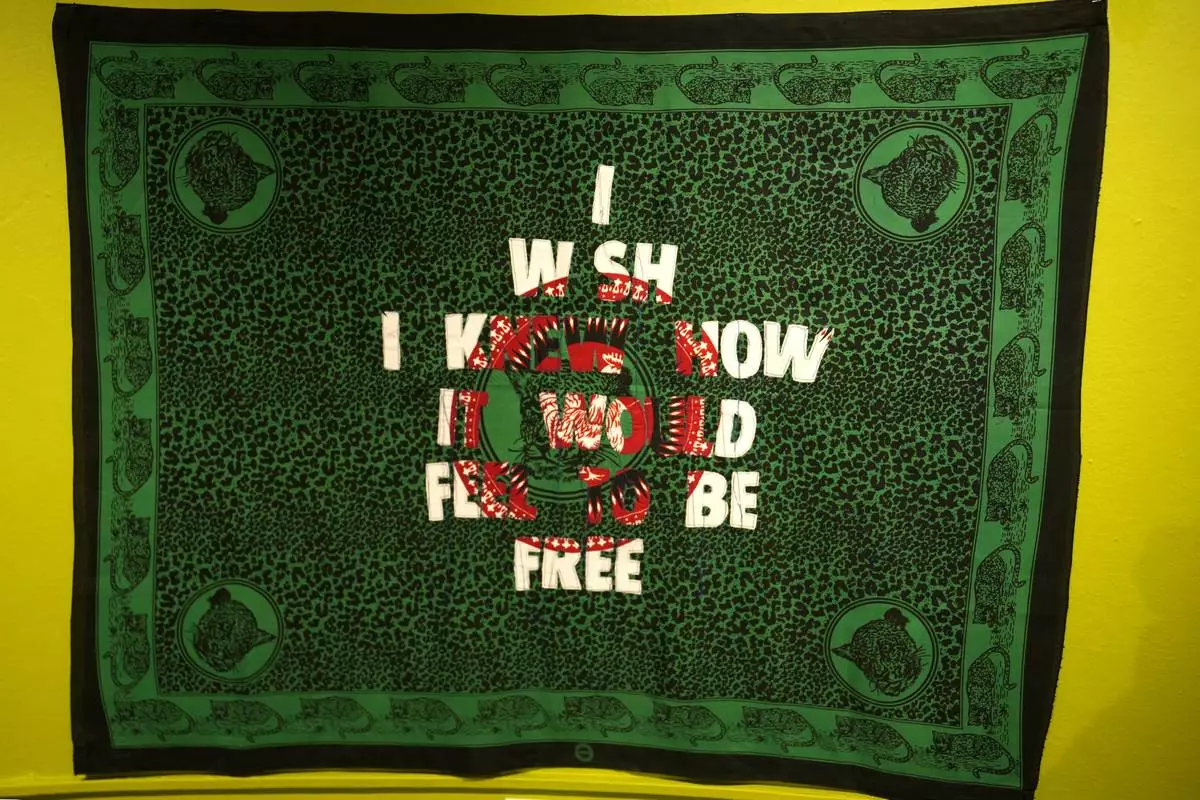
An work by artist Lawrence Lemaoana at an exhibition at the Apartheid Museum in Johannesburg, South Africa, Wednesday, April 24, 2024. A selection of artworks which were produced during the country's apartheid era and ended up in foreign art collections are on display to mark 30 years since the country's transition to democracy in 1994. (AP Photo/Themba Hadebe)
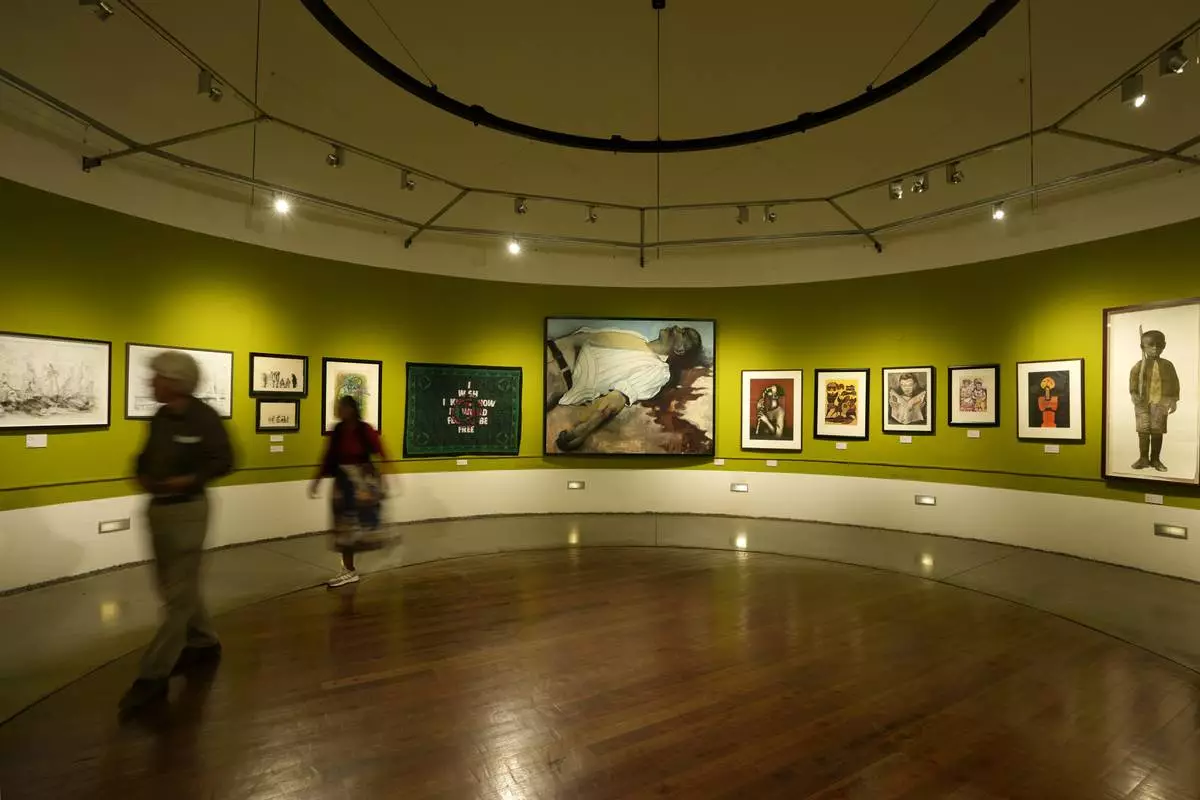
Visitors view an art exhibition at the Apartheid Museum in Johannesburg, South Africa, Wednesday, April 24, 2024. A selection of artworks which were produced during the country's apartheid era and ended up in foreign art collections are on display to mark 30 years since the country's transition to democracy in 1994. (AP Photo/Themba Hadebe)

Artist Michael Selekane takes a photograph of his work at an exhibition at the Apartheid Museum in Johannesburg, South Africa, Wednesday, April 24, 2024. A selection of artworks which were produced during the country's apartheid era and ended up in foreign art collections are on display to mark 30 years since the country's transition to democracy in 1994. (AP Photo/Themba Hadebe)

Artist Lawrence Lemaoana at an exhibition at the Apartheid Museum in Johannesburg, South Africa, Wednesday, April 24, 2024. A selection of artworks which were produced during the country's apartheid era and ended up in foreign art collections are on display to mark 30 years since the country's transition to democracy in 1994. (AP Photo/Themba Hadebe)










